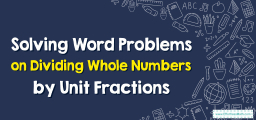Visualizing Multiplication: How to Use Arrays to Multiply Fractions by Whole Numbers
Multiplying fractions by whole numbers can be visualized effectively using arrays.

Arrays provide a clear and tangible representation of the multiplication process, making it easier to grasp, especially for visual learners. In this guide, we’ll delve into the method of using arrays to multiply fractions by whole numbers.
Step-by-step Guide:
1. Understanding Arrays:
An array is a systematic arrangement of objects, usually in rows and columns. When dealing with fractions and whole numbers, arrays can be used to represent the whole number as rows and the fraction as a part of each row.
2. Setting Up the Array:
To multiply a fraction by a whole number:
– Draw rows corresponding to the whole number.
– Divide each row into equal parts based on the denominator of the fraction.
– Shade the number of parts indicated by the numerator of the fraction in each row.
3. Counting the Shaded Parts:
Once the array is set up:
– Count the total number of shaded parts. This represents the product’s numerator.
– The denominator remains the same as the original fraction’s denominator.
4. Simplifying the Result:
If the result is an improper fraction, convert it to a mixed number for simplicity.
Example 1:
Multiply \(\frac{2}{3}\) by 4 using an array.
Solution:
– Draw 4 rows (for the whole number 4).
– Divide each row into 3 equal parts (for the denominator 3).
– Shade 2 parts in each row (for the numerator 2).
In total, 8 parts are shaded.
The result is \(\frac{8}{3}\), which is equal to \(2 \frac{2}{3}\).
The Absolute Best Book for 5th Grade Students
Example 2:
Multiply \(\frac{3}{5}\) by 3 using an array.
Solution:
– Draw 3 rows (for the whole number 3).
– Divide each row into 5 equal parts (for the denominator 5).
– Shade 3 parts in each row (for the numerator 3).
In total, 9 parts are shaded.
The result is \(\frac{9}{5}\), which is equal to \(1 \frac{4}{5}\).
Practice Questions:
1. Multiply \(\frac{2}{4}\) by 3 using an array.
2. Multiply \(\frac{3}{7}\) by 5 using an array.
3. Multiply \(\frac{4}{6}\) by 2 using an array.
A Perfect Book for Grade 5 Math Word Problems!

Answers:
1. \(1 \frac{1}{2}\) or \(1.5\)
2. \(2 \frac{1}{7}\)
3. \(1 \frac{1}{3}\) or \(1.33…\)
The Best Math Books for Elementary Students
Related to This Article
More math articles
- 8th Grade STAAR Math Worksheets: FREE & Printable
- 8th Grade NJSLA Math Worksheets: FREE & Printable
- How to Solve Word Problems Involving Completing a Table and Making a Graph?
- How Is the HiSET Test Scored?
- How to Find Volume by Spinning: Disk Method
- How to Graph Inequality: Using Number Lines to Graph Inequalities
- 8th Grade NHSAS Math Worksheets: FREE & Printable
- The Ultimate CBEST Math Formula Cheat Sheet
- How to Factor Trinomials? (+FREE Worksheet!)
- Using Grid Models to Solve Percentage Problems


















What people say about "Visualizing Multiplication: How to Use Arrays to Multiply Fractions by Whole Numbers - Effortless Math: We Help Students Learn to LOVE Mathematics"?
No one replied yet.